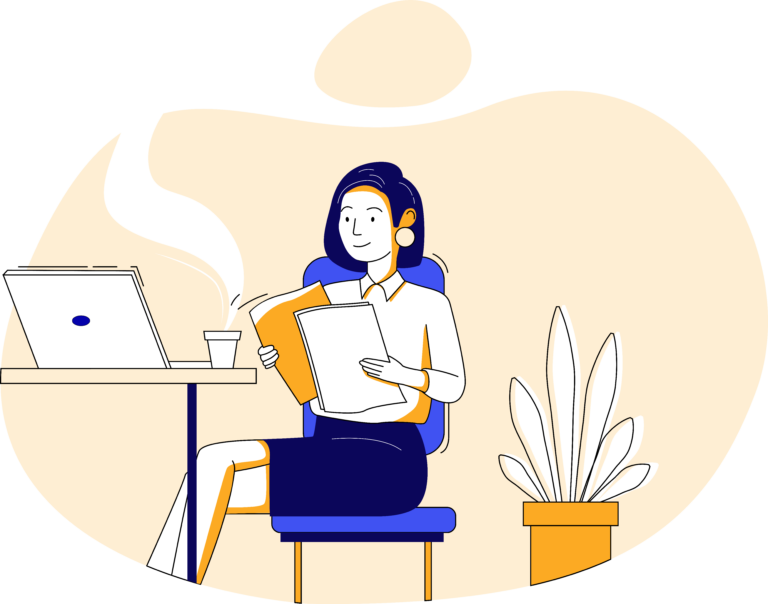How to Write a Cover Letter for an Internship

Landing an internship can be a major step in gaining experience and launching into your career.
Whether you’re a student, a recent graduate, or switching fields, a strong internship cover letter can help you stand out (even if you have limited work experience).
This guide will walk you through tips, tricks and ideas to get you set up to write a well-crafted, customized cover letter for an internship.
Why a Cover Letter Matters for Internships
When applying for internships, your cover letter is often just as important as your resume. Why? Because many internship applications typically don’t have years of experience yet, so, your cover letter is your chance to:
- Introduce yourself and explain why you’re interested in the role
- Highlight your education, interests, and any relevant experience
- Show that you’ve researched the company
- Explain how you’re a good fit
- Demonstrate your writing and communication skills
How to Structure Your Cover Letter
Alright, now that we know why it’s a good idea, here are some important things to remember to include:
- Header and greeting
- Opening paragraph: Introduce yourself and state the role you are interested in
- Middle paragraph(s): Highlight your skills, experience, and enthusiasm about the opportunity
- Final paragraph: Close with a thank you and potential next steps
- Sign-off: Not sure how to even start one of those sections? Don’t worry, we’ve got you covered!
Step 1: Header and Greeting
At the top of your letter, include your contact information (name, phone number, email) and the date. Below that, add the employer’s name and company if you know it.
Example:
Johnny Appleseed
Johnny.A@example.com
(555) 123-4567
July 3, 2025
Jane Doe
Maple Analytics
Next, choose a professional greeting. If you know the hiring manager’s name, use it. For example:
Dear Ms. Doe,
If you don’t know the name, use:
- Dear Hiring Manager
- Dear [Team Name] Team (e.g., “Dear Marketing Team”)
- To Whom It May Concern (only as a last resort)
And remember to avoid overly casual greetings like “Hi there” or “Hey”, since both of those lack professionalism.
Step 2: Opening Paragraph – Who You Are and What You’re Applying For
This is your introduction! Time to share a little more, let the employer know:
- Who you are
- What internship you’re applying for
- Where you found the posting (if relevant)
- A quick sentence about why you’re interested
- Keep it short! 2 to 3 sentences is ideal
Example:
I’m Johnny Appleseed, a third-year Data Science student at the University of British Columbia. I’m writing to apply for the Fall 2025 Data Analytics Internship at Maple Analytics. I’m especially excited about this opportunity because I admire your company’s work on sustainable data projects and want to contribute to meaningful, real-world analytics.
Step 3: Middle Paragraph(s) – What You Bring to the Role
Now that they know who you are, it’s time to show them why you’re a good fit. Even if you don’t have much work experience, you can still highlight:
- Relevant school projects
- Volunteer experience
- Part-time jobs
- Extracurricular activities
- Personal projects (coding, writing, design, etc.) and portfolios
Choose 1–2 key experiences and link them directly to the internship requirements. Use specific examples to show your skills, rather than just listing them! For example, instead of saying:
I have strong communication and teamwork skills.
Say:
As a research assistant at UBC, I have worked closely with a small team to analyze and present survey data for a community program. We created visual dashboards using Excel and Python, and I presented our findings to a group of local non-profits.
You can also add “transferable” skills (like time management, organization, or customer service) that apply across many roles.
Step 4: Show Your Interest in This Company
Companies want interns who are enthusiastic about their mission, and ones who show them they have actually taken the time to do their research on the company. Some key things to include (after researching) could be:
- Mentioning a recent project, campaign, or initiative
- Referencing a company value or goal
- Explaining how your goals align with theirs
Example:
I was especially impressed by Maple Analytics’ recent waste-reduction initiative that helped local businesses cut landfill contributions by 15%. This kind of data-driven environmental impact aligns with my personal and academic interests, and I’d be proud to contribute to the project.
Avoid generic phrases like “I think this would be a good learning experience.” Instead, show that you’re genuinely excited to contribute your time and experience to their company, specifically.
Step 5: Closing Paragraph – Thank You and Next Steps
End on a polite and professional note:
- Thank them for considering your application
- Mention your availability for follow-up discussions
- Express interest in an interview and provide some date/time ideas that work for you
Example:
Thank you for taking the time to review my application! I’d love the opportunity to support your team and continue learning in a hands-on environment. I’m available for an interview any morning in the week of Monday, July 21st. Please let me know what would work best for you!
Step 6: Sign-Off
Stick with something simple and professional:
- Best regards
- Warm regards
- Kind regards
- All the best
- Sincerely
Formatting Tips
- Length: Keep your letter to one page (around 300–400 words)
- Font: Use a clear, professional font like Arial, Calibri, or Times New Roman, size 10–12
- Spacing: Use single spacing with a space between paragraphs
- File name: Save your document as FirstName_LastName_CoverLetter.pdf (HINT: You may want to include the role title that you are applying for in your file name, especially if you are applying for multiple internships so that you don’t accidentally get them mixed up!)
Make sure to proofread carefully. Spelling mistakes or awkward sentences can hurt your chances. Reading it out loud can help you catch small errors.
Helpful Tips to Make Your Letter Stand Out
- Tailor Every Letter
Never send the same letter to multiple companies! Take time to customize each one for the role and company because hiring managers can always tell when a letter is generic; they read many cover letters and avoiding this is one way to stand out.
- Use the Job Posting as a Guide
Highlight keywords from the internship ad in your cover letter. For instance, if it mentions communication, time management, or specific software tools, show that you’ve got those covered by providing concrete examples.
- Show, Don’t Just Tell
Instead of saying “I’m organized,” give an example of how you managed a busy schedule or juggled deadlines during a group project or part-time job. Providing concrete examples to accompany your list of skills is one surefire way to grab your readers’ attention!
- Be Honest and Positive
If you don’t have much experience, that is perfectly okay, don’t try to hide it by making something up. Focus on your enthusiasm, your eagerness to learn, and what you can offer; you could highlight your ability to listen, learn and engage with others.
Sample Internship Cover Letter
Okay, whew! We made it this far, now here’s a full example to help you visualize everything pieced together:
Johnny Appleseed
Johnn.A@example.com
(555) 123-4567
July 3, 2025
Ms. Jane Doe
Maple Analytics
Dear Ms. Doe,
I’m Johnny Appleseed, a third-year Data Science student at the University of British Columbia. I’m writing to apply for the Fall 2025 Data Analytics Internship at Maple Analytics. I’m especially excited about this opportunity because I admire your company’s work on sustainable data projects and want to contribute to meaningful, real-world analytics.
As a research assistant at UBC, I have worked closely with a small team to analyze and present survey data for a community program. We created visual dashboards using Excel and Python, and I presented our findings to a group of local non-profits. Through this role, I developed skills in collaboration, critical thinking, and communicating technical information in an accessible way.
On campus, I’ve also directed a student-led hackathon, managed event logistics, and mentored first-year students. These activities have helped me to improve my leadership and time management skills, both of which I’m confident would serve your team well.
I’m particularly interested in how Maple Analytics connects data to real-world environmental impact. Your recent work reducing local landfill use is the kind of project I’d be proud and excited to support. I am eager to bring my curiosity, commitment, and growing technical skills to your internship team this fall.
Thank you for taking the time to review my application! I’d love the opportunity to support your team and continue learning in a hands-on environment. I’m available for an interview any morning in the week of Monday, July 21st. Please let me know what would work best for you!
Sincerely,
Johnny Appleseed
Extra Online Resources
Here are some helpful sites to support your cover letter writing:
- SEEK Career Advice – How to Write a Cover Letter for an Internship
A clear guide with examples and formatting tips.
Read it here - Indeed Career Guide – Internship Cover Letter Samples
Offers sample letters and explanations of what to include.
View on Indeed - University of Toronto – Resume and Cover Letter Toolkit
A great resource with advice tailored to students.
Check out the Toolkit - LiveCareer – Free Cover Letter Builder
A tool that can help you format your letter professionally.
Try it here
Writing a cover letter for an internship might feel intimidating, especially when you’re just starting out! But with a solid cover letter by your side, you’re one step closer to landing a great internship and building your future career.




